General micro and molecular biology thread. Post pics, vids, lectures, studies, or anything related to micro or molecular biology here.
https://www.youtube.com/watch?v=B_zD3NxSsD8
/cyb/ - Cyberpunk Fiction and Fact
Cyberpunk is the idea that technology will condemn us to a future of totalitarian nightmares here you can discuss recent events and how technology has been used to facilitate greater control by the elites, or works of fiction
Archived thread
Anonymous
No.540
Pic is rickettsia, an obligate intracellular bacteria that is believed to be related to mitochondria.
Anonymous
No.555
https://www.ncbi.nlm.nih.gov/pmc/articles/PMC5102282/
>Psychobiotics were previously defined as live bacteria (probiotics) which, when ingested, confer mental health benefits through interactions with commensal gut bacteria. We expand this definition to encompass prebiotics, which enhance the growth of beneficial gut bacteria. We review probiotic and prebiotic effects on emotional, cognitive, systemic, and neural variables relevant to health and disease. We discuss gut–brain signalling mechanisms enabling psychobiotic effects, such as metabolite production. Overall, knowledge of how the microbiome responds to exogenous influence remains limited. We tabulate several important research questions and issues, exploration of which will generate both mechanistic insights and facilitate future psychobiotic development. We suggest the definition of psychobiotics be expanded beyond probiotics and prebiotics to include other means of influencing the microbiome.
>Psychobiotics were previously defined as live bacteria (probiotics) which, when ingested, confer mental health benefits through interactions with commensal gut bacteria. We expand this definition to encompass prebiotics, which enhance the growth of beneficial gut bacteria. We review probiotic and prebiotic effects on emotional, cognitive, systemic, and neural variables relevant to health and disease. We discuss gut–brain signalling mechanisms enabling psychobiotic effects, such as metabolite production. Overall, knowledge of how the microbiome responds to exogenous influence remains limited. We tabulate several important research questions and issues, exploration of which will generate both mechanistic insights and facilitate future psychobiotic development. We suggest the definition of psychobiotics be expanded beyond probiotics and prebiotics to include other means of influencing the microbiome.
A few papers on using microbe to convert coal into methane.
https://www.netl.doe.gov/File%20Library/Research/Coal/energy%20systems/gasification/FE0024126-KickoffPresentation-120914.pdf
https://www.usea.org/sites/default/files/082010_Microbial%20methane%20from%20carbon%20dioxide%20in%20coal%20beds_ccc174.pdf
>Microbial CH4 chemistry and its formation in coal are summarised. The results of recent research on microbial CH4 formation are reviewed from Australia, China, Germany, Japan, and the USA. Two fields of interest are considered in this report. Enhanced microbial CH4 production is under investigation to improve the yield of CBM. A further development is to inject CO2 in coal seams, using microbes to convert it to CH4 for recovery.
>There is reliable evidence for the production of CH4 through recent microbial activity in coal beds. Microbial CH4 may be enhanced artificially and there is an incentive to turn CBM, where appropriate, to a continuously renewing system. The introduction of large quantities of CO2 from carbon capture systems could have a favourable effect on microbial CH4 formation. However, there are uncertainties about the supply of H2 which is essential to form CH4. Field and laboratory studies are in progress to address gaps of knowledge in the geology, microbiology and engineering.
http://www.annualreviews.org/doi/full/10.1146/annurev-earth-040610-133343
>Microbial methane accumulations have been discovered in multiple coal-bearing basins over the past two decades. Such discoveries were originally based on unique biogenic signatures in the stable isotopic composition of methane and carbon dioxide. Basins with microbial methane contain either low-maturity coals with predominantly microbial methane gas or uplifted coals containing older, thermogenic gas mixed with more recently produced microbial methane. Recent advances in genomics have allowed further evaluation of the source of microbial methane, through the use of high-throughput phylogenetic sequencing and fluorescent in situ hybridization, to describe the diversity and abundance of bacteria and methanogenic archaea in these subsurface formations. However, the anaerobic metabolism of the bacteria breaking coal down to methanogenic substrates, the likely rate-limiting step in biogenic gas production, is not fully understood. Coal molecules are more recalcitrant to biodegradation with increasing thermal maturity, and progress has been made in identifying some of the enzymes involved in the anaerobic degradation of these recalcitrant organic molecules using metagenomic studies and culture enrichments. In recent years, researchers have attempted lab and subsurface stimulation of the naturally slow process of methanogenic degradation of coal.
https://www.netl.doe.gov/File%20Library/Research/Coal/energy%20systems/gasification/FE0024126-KickoffPresentation-120914.pdf
https://www.usea.org/sites/default/files/082010_Microbial%20methane%20from%20carbon%20dioxide%20in%20coal%20beds_ccc174.pdf
>Microbial CH4 chemistry and its formation in coal are summarised. The results of recent research on microbial CH4 formation are reviewed from Australia, China, Germany, Japan, and the USA. Two fields of interest are considered in this report. Enhanced microbial CH4 production is under investigation to improve the yield of CBM. A further development is to inject CO2 in coal seams, using microbes to convert it to CH4 for recovery.
>There is reliable evidence for the production of CH4 through recent microbial activity in coal beds. Microbial CH4 may be enhanced artificially and there is an incentive to turn CBM, where appropriate, to a continuously renewing system. The introduction of large quantities of CO2 from carbon capture systems could have a favourable effect on microbial CH4 formation. However, there are uncertainties about the supply of H2 which is essential to form CH4. Field and laboratory studies are in progress to address gaps of knowledge in the geology, microbiology and engineering.
http://www.annualreviews.org/doi/full/10.1146/annurev-earth-040610-133343
>Microbial methane accumulations have been discovered in multiple coal-bearing basins over the past two decades. Such discoveries were originally based on unique biogenic signatures in the stable isotopic composition of methane and carbon dioxide. Basins with microbial methane contain either low-maturity coals with predominantly microbial methane gas or uplifted coals containing older, thermogenic gas mixed with more recently produced microbial methane. Recent advances in genomics have allowed further evaluation of the source of microbial methane, through the use of high-throughput phylogenetic sequencing and fluorescent in situ hybridization, to describe the diversity and abundance of bacteria and methanogenic archaea in these subsurface formations. However, the anaerobic metabolism of the bacteria breaking coal down to methanogenic substrates, the likely rate-limiting step in biogenic gas production, is not fully understood. Coal molecules are more recalcitrant to biodegradation with increasing thermal maturity, and progress has been made in identifying some of the enzymes involved in the anaerobic degradation of these recalcitrant organic molecules using metagenomic studies and culture enrichments. In recent years, researchers have attempted lab and subsurface stimulation of the naturally slow process of methanogenic degradation of coal.
>>557
got anything on polymer-eating bacteria?
I've read about these some time ago, supposedly the reason why the pacific garbage patch is shrinking
These thingies could be a godsend or a nightmare for infrastructure and everyday life tools if weaponized
got anything on polymer-eating bacteria?
I've read about these some time ago, supposedly the reason why the pacific garbage patch is shrinking
These thingies could be a godsend or a nightmare for infrastructure and everyday life tools if weaponized
>>562
here's two on using worms with plastic eating bacteria in their guts to break down plastic.
http://pubs.acs.org/doi/abs/10.1021/acs.est.5b02663
http://pubs.acs.org/doi/abs/10.1021/es504038a
and here is one on fungi breaking down plastic
https://www.researchgate.net/profile/Jegadeesh_Raman/publication/260165470_Biodegradation_of_plastic_by_Aspergillus_spp_isolated_from_polythene_polluted_sites_around_Chennai/links/55b5d5c308aec0e5f436be6e.pdf
here's two on using worms with plastic eating bacteria in their guts to break down plastic.
http://pubs.acs.org/doi/abs/10.1021/acs.est.5b02663
http://pubs.acs.org/doi/abs/10.1021/es504038a
and here is one on fungi breaking down plastic
https://www.researchgate.net/profile/Jegadeesh_Raman/publication/260165470_Biodegradation_of_plastic_by_Aspergillus_spp_isolated_from_polythene_polluted_sites_around_Chennai/links/55b5d5c308aec0e5f436be6e.pdf
Anonymous
No.583
>>576
thank you!
I also found the article about the garbage patch
http://www.nature.com/news/2011/110328/full/news.2011.191.html
thank you!
I also found the article about the garbage patch
http://www.nature.com/news/2011/110328/full/news.2011.191.html
8 replies | 6 files | 5 UUIDs | Archived
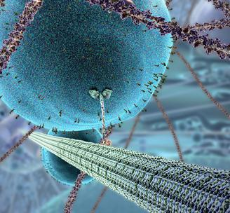

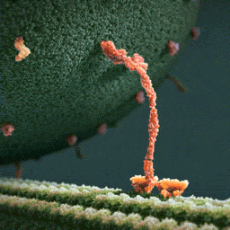
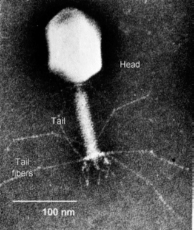
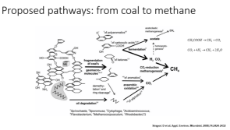
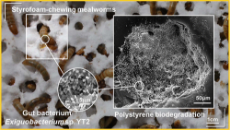
 Ex: Type :littlepip: to add Littlepip
Ex: Type :littlepip: to add Littlepip  Ex: Type :eqg-rarity: to add EqG Rarity
Ex: Type :eqg-rarity: to add EqG Rarity 